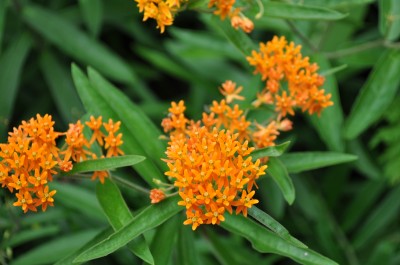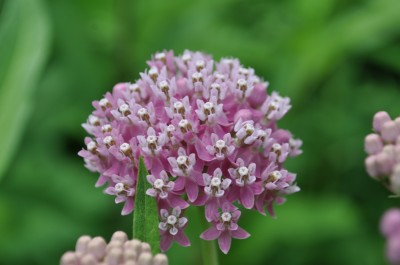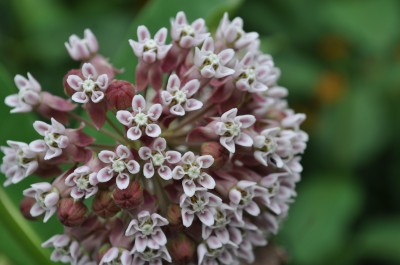Summer certainly has many forms of beauty, but none captures us more than that of ornately patterned butterflies. Without a doubt, butterfly and pollinator gardening is one of the fastest growing fads in landscaping. Unfortunately, when looking for plants to attract butterflies to our gardens, we often overlook very beneficial native plants in favor of showy non-native ornamentals that serve little purpose other than providing nectar. Luckily for our native butterflies, there is a family of native plants that provides showy, nectar rich flowers, and double as food and shelter for many butterfly caterpillars, including the well-known monarch. What is this native pollinator garden superstar family? The milkweeds, of course.
Milkweeds should be the poster children for the native landscaping movement. They provide spectacular floral displays that attract a plethora of pollinators including bees, wasps, beetles, butterflies, and moths. Along with the aesthetic value of the flowers, twelve species of native butterflies can use milkweeds to reproduce. This means that by planting native milkweeds you can attract butterflies to your garden and also provide a place for them to reproduce the next generation right in your backyard.
If you’re looking to attract butterflies with milkweeds in central Pennsylvania, there are three species you shouldn’t be without in your garden: common milkweed, swamp milkweed, and butterfly weed. Common milkweed produces several round umbels, each containing many pinkish-white cup-shaped flowers that butterflies and other pollinators can’t seem to resist. The common milkweed also provides food for the Monarch butterfly, one of our most popular native species. Swamp milkweed is somewhat smaller and produces similarly shaped, but usually more purple flowers. Butterfly weed produces clustered orange or yellow flowers that when planted with other milkweeds provide a nice contrast. With these three species planted together you can enjoy beautiful flowers and butterflies in your gardens from early spring to early fall.
If you’re interested in planting a pollinator garden in your backyard, remember to consider our native milkweeds over ornamentals. They will produce huge numbers of butterflies while also providing a place for their caterpillars to grow and develop. And if you’re interested in learning more about landscaping with native plants, don’t miss the workshop being held at Shaver’s Creek from 11:00 a.m. to 1:00 p.m. on Saturday, August 3rd!



